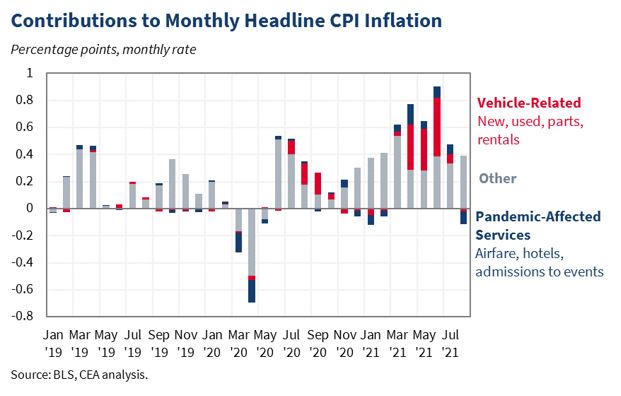
Today, CEA released two blogs: the first blog outlines the basics of the debt limit, and the second examines the full impact of its breach. 1/
Although the United States has never defaulted on its Federal obligations due to the debt limit, the negative repercussions are expected to be widespread and catastrophic for Americans and the U.S. (and global) economy, as outlined in our blog. whitehouse.gov/cea/blog/2021/… 2/
In the case of defaulting on its obligations, the U.S. government would not have enough money coming in to make all of its payments towards critical social programs, such as Social Security, Medicare, and unemployment insurance. 3/
As a result, tens of millions of people would quickly, even overnight in some cases, face the prospect of losing the regular Federal payments that help them to make ends meet. 4/
For example, the average retired Social Security recipient counts on receiving almost $1,600 per month. Among households receiving any Social Security benefits, those benefits make up more than half of household income on average. 5/ 

In addition, the Federal government’s ability to provide for the national defense, pandemic response, and day-to-day services would likely be severely obstructed. 6/
For instance, the deployment of personnel, the maintenance of equipment, the procurement of supplies, and other support activities would risk being frozen if the United States defaulted on its obligations, which would hamper the defense of the country. 7/
Markets and consumers would be hurt by even the threat of a default on its obligations, much less an actual default. 8/
As seen in the run-up to and aftermath of the 2011 debt ceiling crisis (where the country ultimately avoided a default), market risk measures rose persistently, and measures of consumer confidence and small business optimism weakened. 9/
Since U.S. Treasury debt is the world’s benchmark safe asset, and its interest rates act as the basis for the pricing of countless global financial products and transactions, a default on Federal government obligations would induce a global financial crisis and a recession. 10/
In short, just the threat of a default has negative effects on the U.S. economy, and an actual default for any amount of time would inflict a devastating blow that would be felt by families, businesses, and the U.S and global economy for decades to come. 11/
Read “The Debt Ceiling: An Explainer” here. 12/ whitehouse.gov/cea/blog/2021/…
Read “Life After Default” here. /end whitehouse.gov/cea/blog/2021/…
• • •
Missing some Tweet in this thread? You can try to
force a refresh





